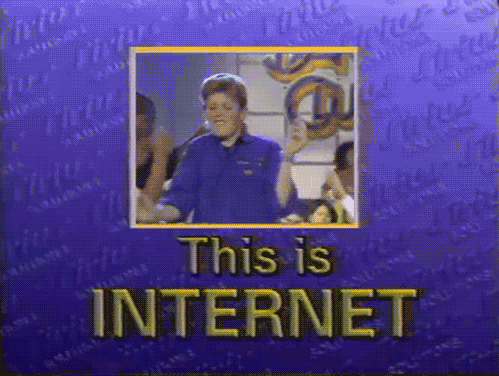As it grows, the internet nurtures us, but it also needs to be nurtured. This codependency sees us furnished with the funniest cat videos known to man, and in return we must offer our digital overlord a sacrifice in the form of words and images. It boils down to this: the internet is sustained by websites. It suckles on their binary teats like a mewling babe in arms, consuming the mother's milk that is good spelling and correct punctuation. That's why sites like Twitter and Facebook are bastions of immaculate grammar.
Did you know?
The internet needs to eat 5,464 websites every day to survive.
I've done my part — this blog has been up and running since 2011 — but I realized recently that I would have to do more, especially considering that I work in the digital sector. That's why I built myself a website from scratch (using a pre-rendered template), using nothing but my bare hands and sharp wits (read: Google). It was a baptism of fire; a process in which I had to leave my digital adolescence behind and become an internet adult (not a euphemism); a confirmation of my quasi-competence. All I need now is a professional-looking photo of myself; something that doesn't seem to exist at the moment. Anyway, here's how I did it.
 |
| Top 40 on the radio? Tab Clear on hand? Let's get coding! |
1. Get a domain
The first step is always the hardest, apart from when it's actually the easiest... but this wasn't easy... it was a pleasure... if you like really difficult things... that turn out to be simple... but are still very tricky. Anyway, davidwelsh.com was taken, so I went for davidwelsh.ca. End of story.
2. Get hosting
As everybody knows, the internet is a series of tubes (copyright Ted Stevens, 2006) that sometimes become physically clogged. Think of hosting as a hard shoulder on a major road: this is where websites lie in wait like so many predatory truckers, starting up their engines and rolling into action whenever they're called up by a web browser. Good hosting is reliable, secure and well lit. Great hosting has a 50s-style diner nearby. I went for the cheapest — the digital equivalent of a dark alley next to an insane asylum — and I'm absolutely delighted with the results so far.
 |
| This... is... INTERNET. |
3. The science part
I could have coded a website from scratch, no sweat, but I didn't because it would have looked like a Geocities page circa 1998. Instead, I installed WordPress and chose a suitably sexy template (Zerif Lite, since you ask). Rest assured that the HTML is artisanal, the CSS is organic and the images are sustainably sourced from local pixel farms. I also double-cooked the icons and applied several coats of extra virgin code, which means they'll require less maintenance over the course of the website's lifespan.
Did you know?
Internet traffic drives on the left in most Commonwealth countries.
4. Promote, promote, promote!
Freelance writing is a dog-eat-dog world, but with the right web property a freelancer can expect writing commissions to leap into their net like so many suicidal fish. All you need to do is open up Netscape and paste the address where people can see it. Yahoo!, AltaVista and MySpace are good places to start. Sign up for an email ("electronic mail") address and continually refresh your inbox (again, not a euphemism, but good advice nonetheless) until the dream job presents itself.
And that's all there is to it. If you have any questions and think I could help, feel free to type them out in a .txt file, save to a floppy disk and post to me. I will fax my response (and several frames of the most appropriate reaction gif) within 20 working days. Stay tuned for more advanced topics in this series of internet tutorials, including 'When Will Bitmaps Be Cool Again?' and 'How Do I Add Midi Music To My Friendster Page?'
